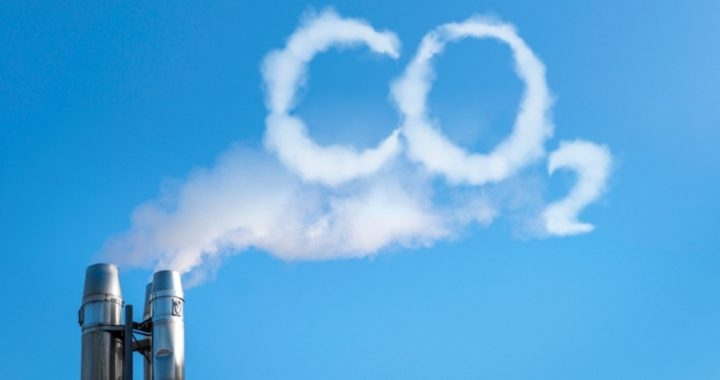
According to Environmental Protection Agency data, greenhouse-gas emissions in the United States are dropping. Despite having a so-called climate-change denier in the White House along with a complicit Congress, the United States is leading the way in cutting greenhouse gases, which the bureaucrats at the United Nations’ Intergovernmental Panel on Climate Change (IPCC) say cause global warming.
The rest of the world isn’t doing so well on cutting those nasty greenhouse-gas emissions, however. Worldwide, greenhouse-gas emissions went up approximately two percent over the same time period.
How ironic.
Data collected from more than 8,000 large facilities show that greenhouse gases, mostly carbon dioxide, fell in the United States by 2.7 percent from 2016 to 2017. Emissions from large power plants fell by 4.5 percent over the same time period.
Experts believe that the drop in emissions can mainly be attributed to natural gas becoming far cheaper and more available. Natural gas burns far cleaner than coal, the use of which is trending down as the cheaper natural gas becomes more available. Natural gas has become far more available through the use of hydraulic fracturing — sometimes called fracking — and horizontal drilling, both of which have unlocked vast shale-gas reserves.
Environmentalists, who are so committed to fighting climate change, generally despise fracking, which has been used to cut greenhouse gases in America. They also oppose the expanded use of nuclear energy, which is also a far cleaner source of energy than traditional fossil fuels. All of this might make one wonder what the environmentalists’ real agenda is.
To a far lesser extent, increased use of wind and solar energy have also helped drop emissions in the United States.
This is actually the ninth time in this greenhouse-gas-obsessed century that the United States has led the world in the drop of carbon emissions.
Unfortunately — or irrelevantly, depending on how you look at it — despite the good news in the United States, most of those Paris Climate Accord signatories are falling behind. The EPA estimates that 2018 will be another record high year for greenhouse-gas emissions worldwide.
China is the largest offender in the world’s increase in emissions, with India and other undeveloped countries contributing as well. China and India alone account for nearly half of the world’s increase. But many European nations — and the European Union itself — are also nowhere close to meeting the goals they set with the Paris Climate Accord.
According to BP’s annual energy statistics, over the same time period in which U.S. emissions fell by 2.7 percent, the European Union’s emissions are up by 1.5 percent, with Spain accounting for 44 percent of that increase. While the “UK and Denmark reported the lowest carbon emissions in their history,” Germany and France lagged behind with their emissions rising by 0.1 and two percent, respectively.
Germany, considered by many to be the best example of an industrialized nation trying to hold the line on carbon emissions, is also on pace to miss its 2020 goal of reducing emissions by 40 percent. According to the government, the best they can hope for is a reduction of 32 percent compared to 1990 levels.
France’s rise of emissions by two percent is especially galling, given President Emmanuel Macron’s history of criticizing President Trump’s decision to withdraw from the Paris Climate Accord. To paraphrase the Bible — Matthew 7:5 to be exact — President Macron should remove the beam from his own eye before attempting to remove the speck from his brother’s eye.
“The Trump Administration has proven that federal regulations are not necessary to drive CO2 reductions,” said acting EPA Administrator Andrew Wheeler in a statement. “While many around the world are talking about reducing greenhouse gases, the U.S. continues to deliver, and today’s report is further evidence of our action-oriented approach.”
“Thanks to President Trump’s regulatory reform agenda, the economy is booming, energy production is surging, and we are reducing greenhouse gas emissions from major industrial sources,” said Wheeler.
Giving President Trump a lion’s share of the credit may be a bit of a stretch. To be fair, the data is from 2016-2017 and much of the president’s agenda didn’t go into effect as soon as he took office in January of 2017. It’s also true that greenhouse-gas emissions have been trending downward in the United States since 2007.
But it’s still hilarious.




